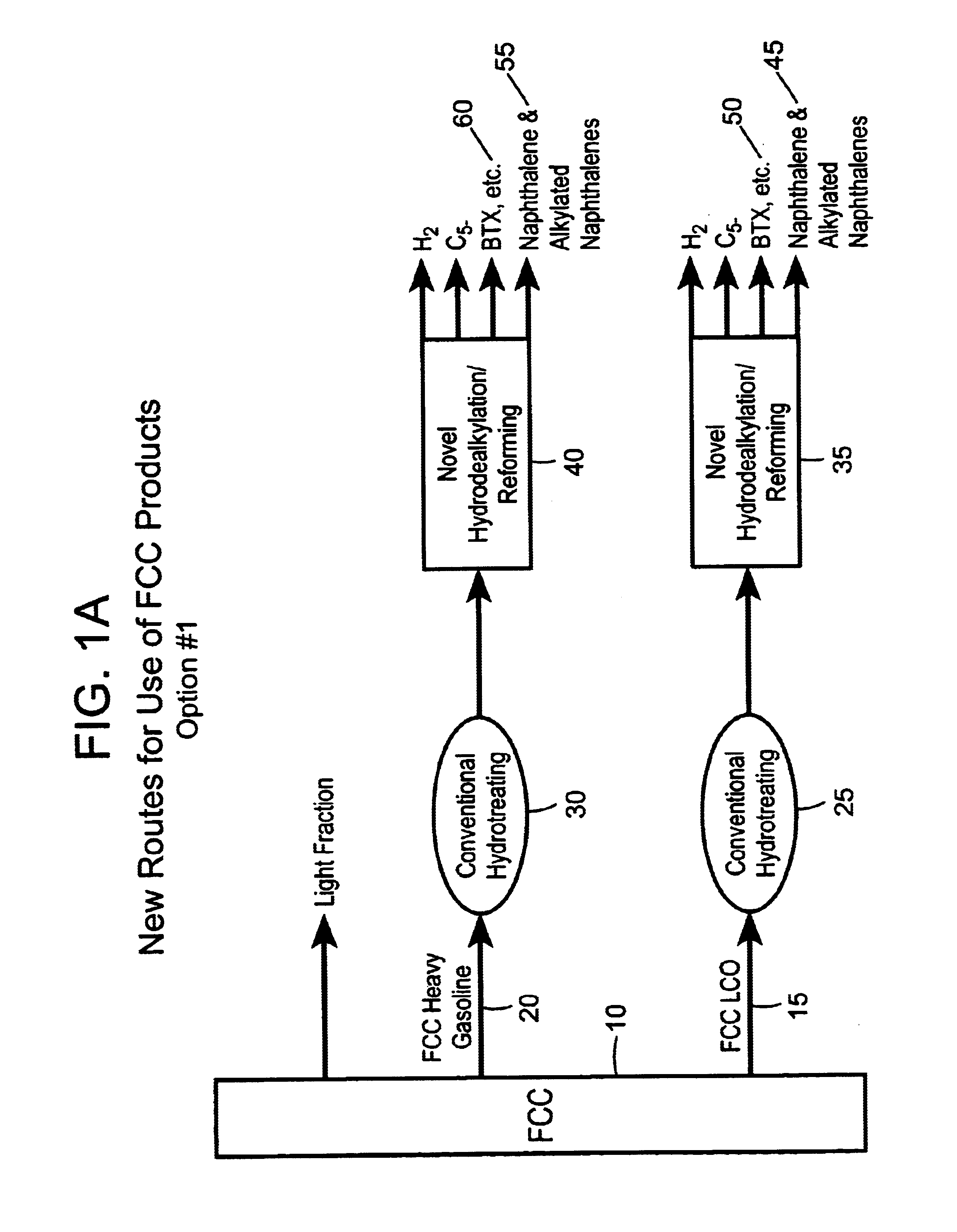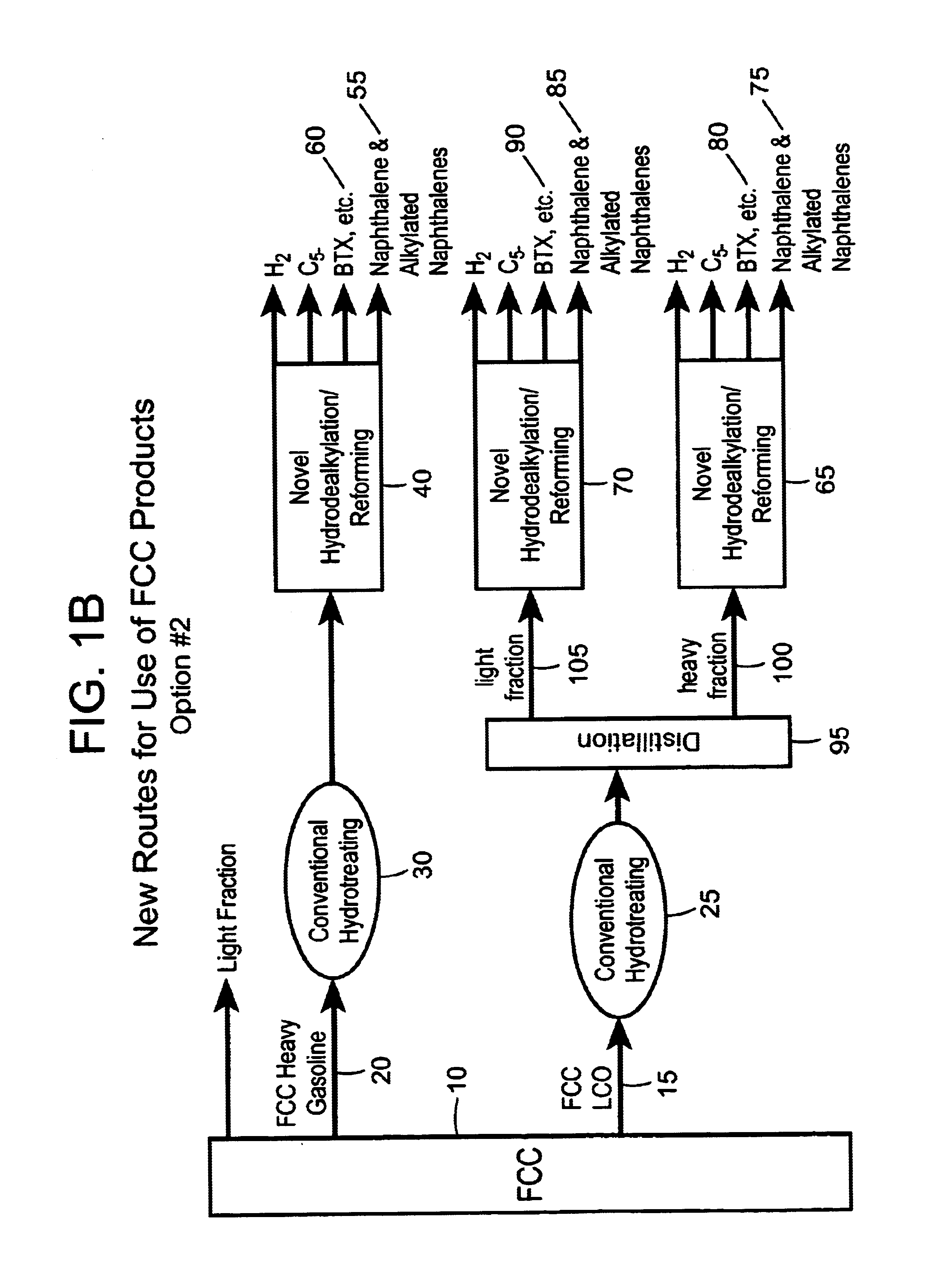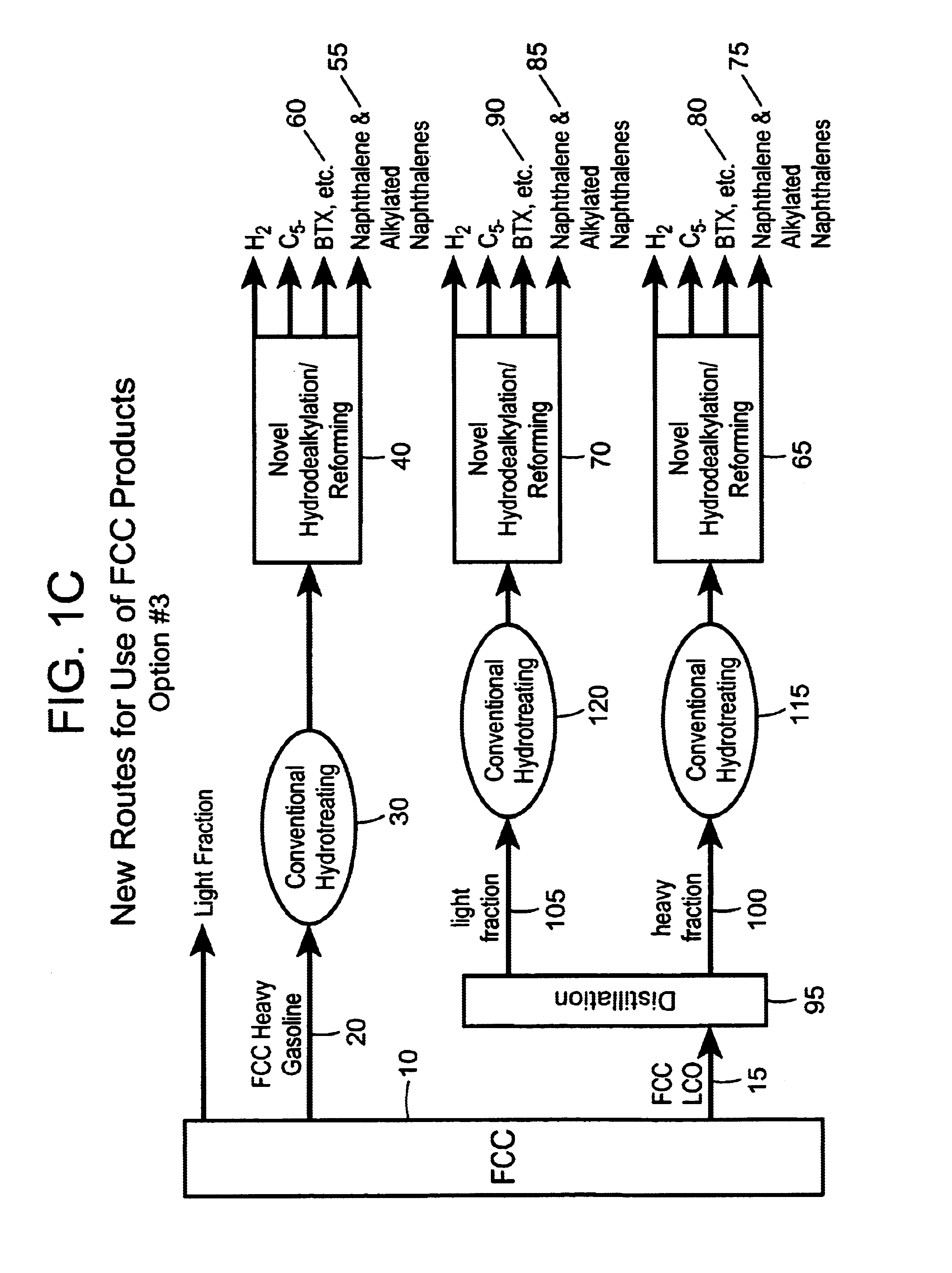Process for converting heavy hydrocarbon feeds to high octane gasoline, BTX and other valuable aromatics
a technology of high octane gasoline and heavy hydrocarbon feed, which is applied in the direction of naphtha reforming, catalytic naphtha reforming, organic chemistry, etc., can solve the problems of zeolites including zeolite l, conventional amorphous reforming catalysts, and inefficiently accomplish the above-mentioned task, etc., to achieve high yield of naphthalene and alkylnaphthalen
- Summary
- Abstract
- Description
- Claims
- Application Information
AI Technical Summary
Benefits of technology
Problems solved by technology
Method used
Image
Examples
examples
[0113]The present invention will be further described with the following examples showing the results of several experiments.
Preparation of Hydrodealkylation / Reforming Catalysts
examples 1-8
Example 1
Synthesis of B-SSZ-33
[0114]2.0 Moles of trimethylammonium-8-tricyclo [5.2.1.0] decane in 3700 ml of water were mixed with 3600 ml of water, 92 grams of boric acid and 39 grams of solid NaOH. Once a clear solution was obtained, 558 grams of Cabosil M-5 were blended in and 5 grams of as-made B-SSZ-33 seed material were added. The entire contents had been mixed in the Hastelloy liner used in a 5-gallon autoclave (Autoclave Engineers). The reaction mixture was stirred overnight at 200 rpm and at room temperature. Next, the reactor was ramped up to 160° C. over 12 hours and the stirring rate dropped to 75 rpm. The reaction mixture was held under these conditions for 10 days of run time. The recovered, settled product was crystalline B-SSZ-33 in accord with U.S. Pat. No. 4,963,337.
[0115]A portion of the as-synthesized B-SSZ-33 product prepared above was calcined as follows. The sample was heated in a muffle furnace from room temperature up to 540° C. at a steadily increasing rate...
example 2
Synthesis of B-SSZ-42
[0116]3 Millimoles of N-benzyl-1,4-diazabicyclo[2.2.2]octane hydroxide as a 5.5 ml aqueous solution was used to dissolve 0.06 grams of sodium borate decahydrate. 0.6 grams of Cab-O-Sil® M-5 silica were then slurried into the resulting solution. The reaction mixture was heated in a Teflon® cup of a stainless steel reactor at 150° C. for 17 days without agitation. The recovered, settled product was crystalline B-SSZ-42 in accord with U.S. Patent 5,653,956.
[0117]The as-synthesized B-SSZ-42 product prepared above was calcined as follows. The sample was heated in a muffle furnace from room temperature up to 600° C. in stages and under a stream of nitrogen with a small air bleed. The stages were to 125° C. at 50° C. / hour, hold for 2 hours, 50° C. / hour to 540° C., hold for 4 hours, 50° C. / hour to 600° C. with a final hold for 4 hours. The calcined B-SSZ-42 product had the X-ray diffraction pattern lines in accord with U.S. Pat. No. 5,653,956. The elemental analysis of ...
PUM
| Property | Measurement | Unit |
|---|---|---|
| pore size | aaaaa | aaaaa |
| molar ratio | aaaaa | aaaaa |
| temperature | aaaaa | aaaaa |
Abstract
Description
Claims
Application Information
 Login to View More
Login to View More - R&D
- Intellectual Property
- Life Sciences
- Materials
- Tech Scout
- Unparalleled Data Quality
- Higher Quality Content
- 60% Fewer Hallucinations
Browse by: Latest US Patents, China's latest patents, Technical Efficacy Thesaurus, Application Domain, Technology Topic, Popular Technical Reports.
© 2025 PatSnap. All rights reserved.Legal|Privacy policy|Modern Slavery Act Transparency Statement|Sitemap|About US| Contact US: help@patsnap.com



